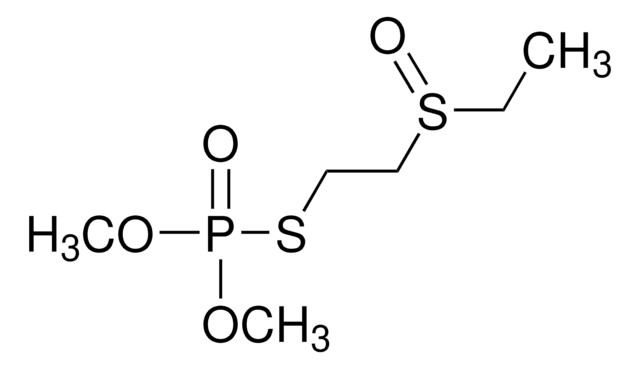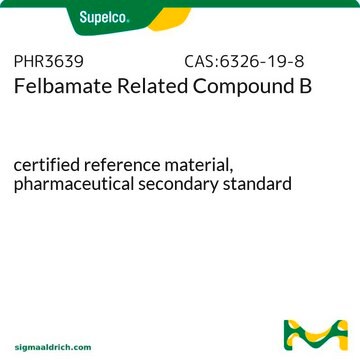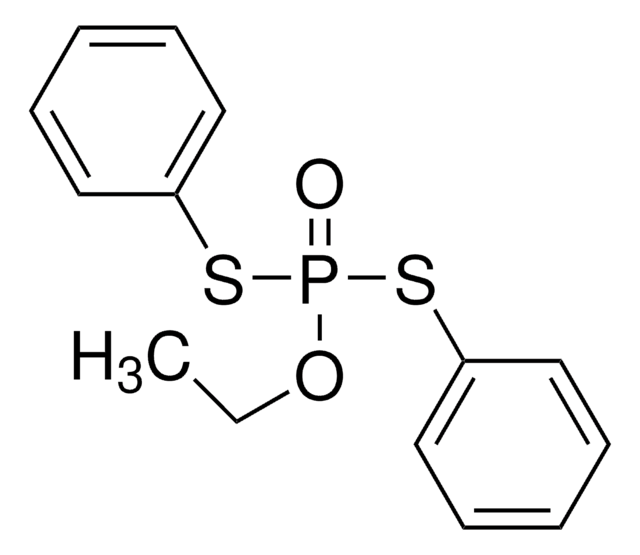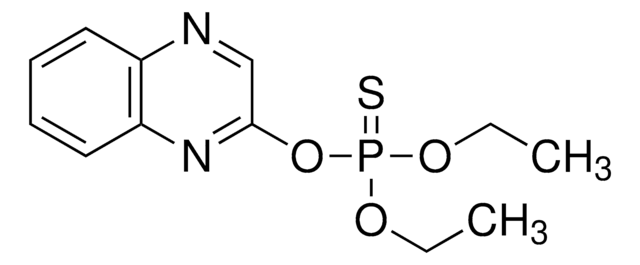CRM44794
Phosphamidon
certified reference material, TraceCERT®, Manufactured by: Sigma-Aldrich Production GmbH, Switzerland
Synonym(s):
2-Chloro-N,N-diethyl-3-(dimethylphosphono)crotonic amide
About This Item
Recommended Products
grade
certified reference material
TraceCERT®
Quality Level
product line
TraceCERT®
shelf life
limited shelf life, expiry date on the label
manufacturer/tradename
Manufactured by: Sigma-Aldrich Production GmbH, Switzerland
format
neat
storage temp.
−20°C
SMILES string
CCN(CC)C(=O)\C(Cl)=C(\C)OP(=O)(OC)OC
InChI
1S/C10H19ClNO5P/c1-6-12(7-2)10(13)9(11)8(3)17-18(14,15-4)16-5/h6-7H2,1-5H3/b9-8+
InChI key
RGCLLPNLLBQHPF-CMDGGOBGSA-N
Looking for similar products? Visit Product Comparison Guide
General description
Certified content by quantitative NMR incl. uncertainty and expiry date are given on the certificate.
Download your certificate at: http://www.sigma-aldrich.com
Phosphamidon is a broad-spectrum systemic organophosphorus pesticide. It is used as an insecticide against sap-feeding insects, rice-stem borers, and rice leaf beetles in crops of sugarcane, citrus fruits, commercial cotton, and nuts.
As per Regulation (EC) No. 1107/2009, repealing directive 91/414/EEC, phosphamidon is not approved for use in the European Union. But a default maximum residue limit (MRL) of 0.01 mg/kg is applicable for the presence of phosphamidon in products of plant origin, in accordance with Regulation (EC) No. 149/2008.
Application
The phosphamidon CRM may also find following uses:
- Determination of five organophosphorus pesticides in a medicinal herb sample using QuEChERS along with dispersive liquid-liquid microextraction (DLLME) and stacking followed by micellar electrokinetic chromatography (MEKC)
- Magnetic solid phase microextraction (MSPE) of five organophosphorus pesticides using graphene based cyanopropyltriethoxysilane as an adsorbent from cow′s milk samples and their subsequent determination by gas chromatography with micro-electron capture detector
- Investigation of residue levels of highly toxic pesticides in 6554 samples of fruits and vegetables by quadrupole time-of-flight LC/MS
- Analysis of 4 organophosphorus pesticides by gas chromatography with microelectron capture detector following their extraction using a newly synthesized magnetic hybrid material as a solid phase extraction adsorbent
- Multi-residue analysis of 44 organophosphorus pesticides by QuEChERS method combined with gas chromatography in Pogostemon cablin samples
- Detection of organophosphorus pesticides in Chinese cabbage sample by a newly designed positive photoionization-ion mobility spectrometry (PP-IMS) apparatus
Legal Information
Signal Word
Danger
Hazard Statements
Precautionary Statements
Hazard Classifications
Acute Tox. 2 Oral - Acute Tox. 3 Dermal - Aquatic Acute 1 - Aquatic Chronic 1 - Muta. 2
Storage Class Code
6.1A - Combustible acute toxic Cat. 1 and 2 / very toxic hazardous materials
WGK
WGK 3
Flash Point(F)
Not applicable
Flash Point(C)
Not applicable
Choose from one of the most recent versions:
Certificates of Analysis (COA)
Don't see the Right Version?
If you require a particular version, you can look up a specific certificate by the Lot or Batch number.
Already Own This Product?
Find documentation for the products that you have recently purchased in the Document Library.
Our team of scientists has experience in all areas of research including Life Science, Material Science, Chemical Synthesis, Chromatography, Analytical and many others.
Contact Technical Service











